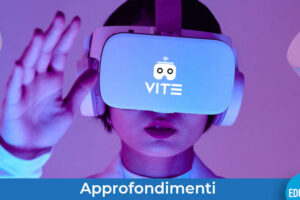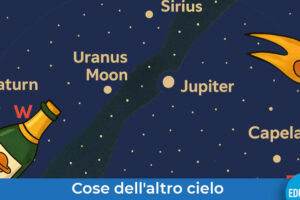Sabir is a project aimed at producing activities for high school students and fostering innovative, open, critical learning in the Mediterranean.
Sabir is addressed to the IAU National Astronomy Educations community, and it involves six different Mediterranean countries: Italy, Lebanon, Morocco, Slovenia, Spain and Turkey.
The project is organised by Dunja Fabian (NAEC Slovenia), Stefano Sandrelli, and Gloria Tirabassi (I-OAE) and it is conducted through a co-design method in all its phases: it stands on a previous co-design project led by OAE Center Italy (I-OAE), the MIRTO-STEAM-Med (2022) project.
Sabir is one of the two co-design-based residencies organised by OAE Italy Center in 2024 together with FRESCO (Florence RESidency and Codesign), that will produce playful resources for children, targeting ages up to 12 years (U12). I-OAE covers all the costs.
The name Sabir identifies a contact language used as a lingua franca in the Mediterranean Basin from the 11th to the 19th centuries. It is not a formal language with written rules nor a specific-country spoken language: it emerged on the will of people, mainly sailors and traders, to communicate, to share, to live together.
Goal of the project
Sabir aims at promoting and encouraging innovative, open, critical learning by producing Inquiry-Based Learning (IBL) activities for high school students. If you wish to start deepening what an IBL is here, on the astroEDU platform.
Although the IBL variety is very rich and complex, in the scientific literature you can find a substantial agreement about what an IBL grossly is: the essence of enquiry is learning science in ways that mirror authentic scientific research practices, or “learning science as science is done” (Hunter et al. 2010, pdf).
As a matter of fact, IBL activities seem to be similar enough to allow some authors to recognize a general common framework. On the other hand, frameworks differ since they identify different specific phases through which an IBL activity unfolds.
Since our basic idea is to select some non-IBL activities and to transform them into inquiry-based ones through a collaborative process among peers, our first challenge was to define what we really mean with IBL in Sabir and how we would like to design it in principle. This was one of the main efforts throughout the whole process.
As a final product, we are publishing the IBL activities on the IAU educational platform astroEDU, together with the translations into all the languages of the participating NAECs and of the facilitators.
The general social goals of the project are:
- Sustaining the NAECs network in the Mediterranean;
- Exchanging best practices;
- Community building and reinforcement;
- Enhancing the co-design implementation process.
Sabir phase by phase
Sabir was designed to be held both online and in-person: indeed, 6 online recorded meetings from February to July are followed by a 1-week long residency in Milano, from Monday the 2nd of September to Friday the 6th.
In December 2023, the NAECs from Lebanon, Morocco, Spain and Turkey were invited to participate in Sabir. Four national teams were formed in each country.
Names?
Aysegul
Jean-Pierre, Marc
Hassane, Zakaria
Dunja, Gloria, Stefano
The online phase
Since Sabir’s focus is to transform an activity into an IBL one, our first challenge was to define what we really mean with IBL in Sabir and how we would like to design it in principle.
Before any online meeting, we collected our own ideas and practices about this theme. During the first meetings, where we discussed the general meaning of IBL, our different experiences and which level of IBL which should be considered appropriate in our case. Then we tried to rebuild our own scheme of an IBL activity, which could help us in designing the activities.
We chose to adopt the framework sketched in M. Pedaste et al., Phases of inquiry-based learning: Definitions and the inquiry cycle (pdf), Educational Research Review, 14(2015), 47-61. They analyse hundreds of IBL activities and put together their descriptions and gather all the words the authors use to describe them. After a long work of synthesis, they eventually identify 5 major phases to characterise an IBL activity, which they choose to identify as 1: Orientation, Conceptualization, Investigation, Conclusion and Discussion. Every phase can be subdivided into sub-phases.
A similar analysis was done in Duran&Duran The 5E Instructional Model: A Learning Cycle Approach for Inquiry-Based Science Teaching (pdf).
In the following meetings, the NAECs proposed some activities of theirs which could be candidates to be developed as IBL co-designed activities.
The candidate activities could be:
- an already tested non-IBL activity
- an already tested partially IBL activity
- a new idea suitable to become an IBL activity
The groups suggested the following activities to be co-designed and modified into IBL ones published in AstroEDU:
- Aysegul: asteroid mining, mostly new. Title: Asteroid miners
- Jean-Pierre: water rockets (and with curriculum connection), well tested in a non IBL context. Title: 3…2…1… time for water rockets!
- Hassane and Zakaria: students exploring the transit of an exoplanet (transit method), mostly new. Title: Exoplanet in a box
- Nayra and Alejandra: do we live in a geocentric or heliocentric model? a well tested in a not totally IBL context. Title: Our place in the Universe (to be completed)
All the activities had to be rewritten in a simplified astroEDU form to get draft projects for the astroEDU submission. This allows the participants to wonder about the description of the project for the teachers. In this phase, we were quite focused on content development.
From the 2nd meeting, we started to transform their activity into IBL ones. Each NAEC presented his/her group’s activity all together we discussed about the main idea, the link to the national curricula, how to engage them in the scientific challenge, about the inquiries the students could choose to conduct, about the necessary materials or software or real data or to foster an interdisciplinary approach and so on.
In the following meetings, we repeated the process: presentation, discussion, proposed implementation between two consecutives meetings and so on, from presentation. Meanwhile, we fine-tuned the activities with the astroEDU simplified form.
The in-person phase
The in-person phase consisted in a 1-week long residency, from Monday the 2nd to Friday the 6th 2024, hosted by INAF-Osservatorio Astronomico di Brera, in Milano.
During the in-person phase, the NAECs discussed in pairs, with a facilitator. A NAEC presents the other his/her activity and collects the suggestions. The facilitator had to role to help the sparring-partner NAEC to raise questions, to push the discussion towards an IBL approach, to pinpoint the most relevant issues to solve. The facilitator should not take part in the discussion itself.
The presenting NAEC collected the suggestions and implemented his/her activity before the following bi-lateral meeting.
This was repeated until each NAEC discussed with all the other three NAECs, while Stefano and Dunja played as facilitators and Gloria as an observer.
At the end of the week, all the NAECs were requested to write down the final version of the activity in the astroEDU format, with images and everything needed.
The official working program of the residency is the following:
10:30-12:30 co-design H & A discuss and try H’s activity, facilitator S JP & N discuss and try JP’s activity, facilitator D
14:30-15:30 Discussion and writing: the complete astroEdu format
15:30-17:30 co-design N & H discuss and try N’s activity, facilitator D A & JP discuss and try A’s activity, facilitator S
10:00-12:00 codesign H & JP discuss and try H’s activity, facilitator S A & N discuss and try A’s activity, facilitator D
11:30-13:00 co-design, II session H & N discuss and try H’s activity, facilitator D JP & A discuss and try N’s activity, facilitator S
11:30-12:45 Discussion and writing activity
14:30-18:00 codesign N & A discuss and try N’s activity, facilitator S JP & H discuss and try JP’s activity, facilitator D
17:00-18:00 Discussion and writing activity
14:30-15:30 Discussion and writing activity
14:30-18:00 codesign (with free coffee break: pastries, biscuits, some fruits at disposal) Final activities presentation: discussion, final writing and translation agreement



